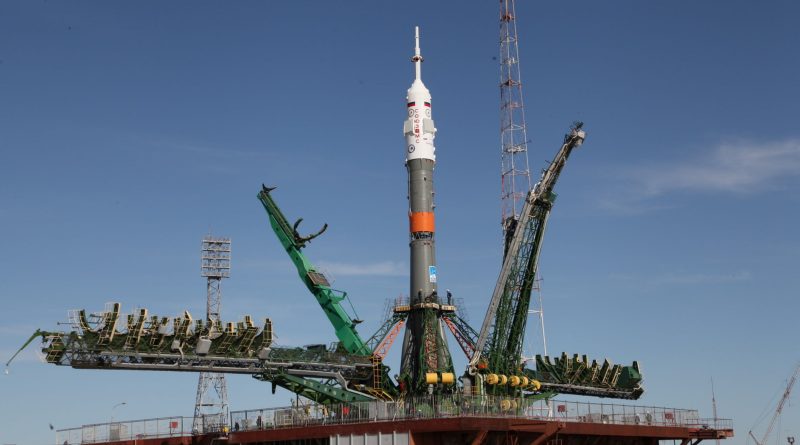Early Morning Rollout kicks off Launch Week for Soyuz FG Rocket & Two-Man ISS Crew
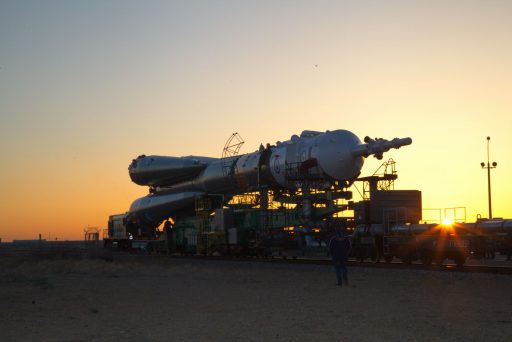
Russia’s Soyuz rocket emerged from its assembly facility on Monday and rolled to the historic Site 1/5 launch complex at the Baikonur Cosmodrome from where it will blast off later this week with a two-man crew headed to the International Space Station.
Soyuz FG, carrying the Soyuz MS-04 spacecraft, is set for liftoff at 7:13:44 UTC on Thursday to begin a nine-minute trip into orbit with veteran Soyuz commander Fyodor Yurchikhin, embarking on his fourth long-duration mission, and NASA’s Jack Fischer, flying to space for the first time. Soyuz MS-04 will be the first in the upgraded MS-class vehicle series to employ a four-orbit, six-hour rendezvous, inbound for docking at 13:23 UTC.
This mission is the first two-person Soyuz launch since the Soyuz TMA-2 mission in April 2003 that launched Yuri Malenchenko and Ed Lu toward ISS for Expedition 7.
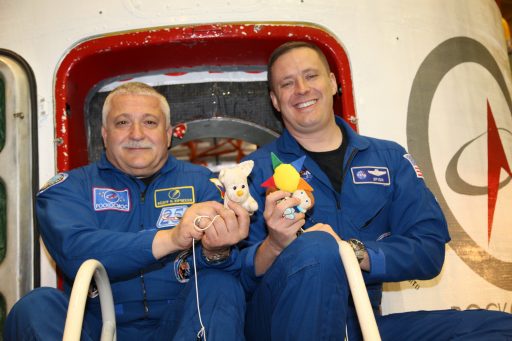
Taking effect with the landing of Soyuz MS-02 last week and the launch of the MS-04 craft is a reduction of the Russian crew on ISS to two permanent members as the current workload on the Russian Segment does not justify having three crew members in orbit as long as the plagued Nauka science module remains on the ground. Additionally, Roscosmos aims to reduce money spent on ISS logistics and training resources until Nauka is ready for flight in 2018 (at the earliest).
The launch of Soyuz MS-04 had to be pushed from a late March target when a coolant leak was found on Soyuz #734 that was originally planned to fly this mission, prompting the decision to switch to the #735 craft in mid-January. To bring the #735 spacecraft up to speed on pre-launch processing, the MS-04 mission slipped three weeks to April 20 and the landing of Soyuz MS-02 was also delayed to keep ISS at a full staff for as long as possible.
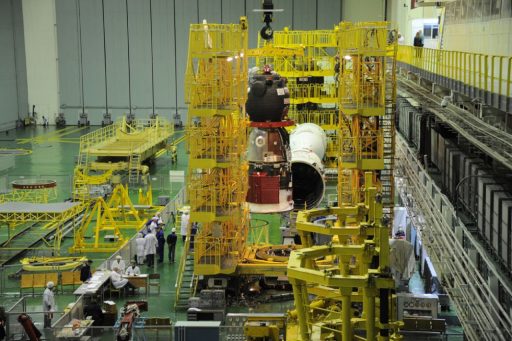
Thursday’s Soyuz FG launch is the first crewed launch since last December’s failure of a Soyuz U rocket with the Progress MS-04 cargo spacecraft. Lifting off from Baikonur on December 1st, Soyuz U encountered a catastrophic engine failure on its third stage and failed to reach orbit. The failure was traced back to a potential flaw within the RD-0110 engine introduced during manufacture and Soyuz U and FG third stages were recalled to be fitted with engines that were not part of the same lot the failed engine was from.
The Soyuz MS-04 spacecraft (#735) entered its final launch processing flow in mid March when it underwent a last set of thermal vacuum checks at the Baikonur Cosmodrome before being placed in a test stand at Site 254 for final checkouts and launch preparations. Fyodor Yurchikhin and Jack Fischer arrived at the Cosmodrome on April 6 after completing final pre-flight exams at the Gagarin Cosmonaut Training Center near Moscow.

Fyodor Yurchikhin, with prior experience as a spaceflight engineer and mission controller, was selected as a Cosmonaut Candidate in 1997 and first flew to space aboard Space Shuttle Atlantis on mission STS-112 in October 2002. Five years later, he returned to the Space Station as part of the Expedition 15 crew and his second flight was Expedition 24 in 2010. Yurchikhin’s third long-duration mission was as part of Expedition 36/37 in 2013. In total, Yurchikhin spent 537 days in space and accumulated nearly 52 hours of spacewalking time; when returning in September, he will rank 7th on the all-time list for time spent in space.
Jack ‘2fish’ Fischer served as Test Pilot in the U.S. Air Force and holds degrees in engineering, selected as Astronaut candidate as part of NASA’s 20th Astronaut Group in 2009. He was initially assigned to the Expedition 52/53 crew, but reshuffling of crew assignments moved his flight forward to Increment 51. Per the current flight plan, Fischer will spend 136 days in space on his first long-duration mission to ISS, also performing at least one planned spacewalk during Expedition 51/52.
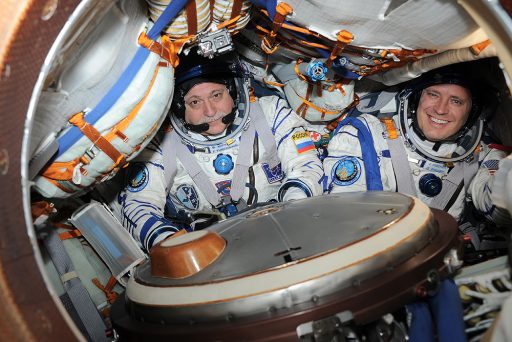
At Baikonur, the two crew members and their backups, Sergei Ryazansky and Randy Bresnik, entered the typical two-week launch preparations flow starting with a fit and leak check of their Sokol Launch and Entry Suits prior to a suited ingress exercise in their Soyuz capsule. Yurchikhin will sit in the commander’s seat in the center with Fischer to the left while the right seat is occupied by additional cargo headed to the Space Station alongside the crew.
For landing in early September, the right seat will be occupied by NASA Astronaut Peggy Whitson who will switch from the Soyuz MS-03 spacecraft to MS-04 to extend her mission by three months to have an additional pair of hands aboard the U.S. Segment.
After the crew’s initial inspection, Soyuz MS-04 was transferred for hazardous processing, receiving propellants and pressurized gases for its four-and-a-half-month mission to space. For the crew, the last days ahead of launch were filled with the traditional pre-flight ceremonies of raising their flags, planting a tree and visiting the Cosmodrome museum while also going through final simulations, tagging up with Mission Control teams and meeting with recovery forces who will be in position along their ascent ground track.
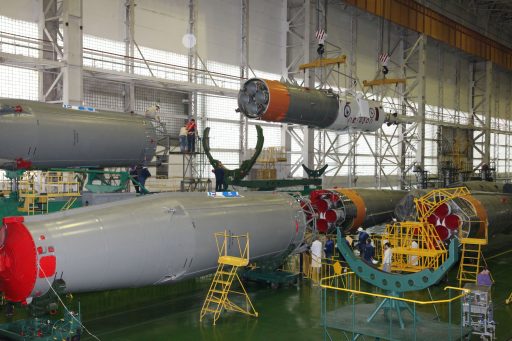
Soyuz MS-04 was enclosed in its protective launch shroud on Wednesday and the crew had a last pre-launch visit with their spacecraft on Thursday to familiarize themselves with the situation on board before entering the vehicle on launch day. The spacecraft was shipped to the MIK launcher integration facility on Friday where the partially assembled Soyuz FG rocket was waiting for its payload.
Over the weekend, technicians finished assembly of the launcher by attaching the encapsulated spacecraft to the Block I upper stage, adding the Launch Escape Tower and mating Block I with the central core of the Soyuz that had already received its four liquid-fueled boosters. With Soyuz fully integrated, the Russian State Commission gave the all-clear for Monday morning’s rollout.
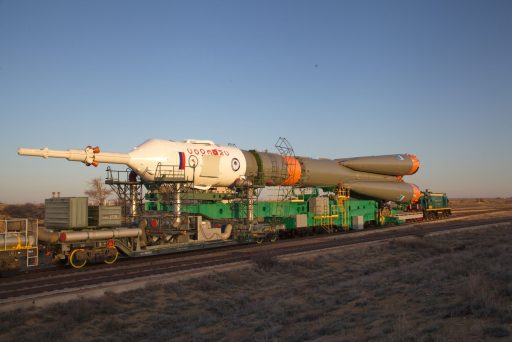
The 49.5-meter long Soyuz emerged from its processing hall at the traditional early morning hour on Monday, greeted by a colorful sunrise as it slowly progressed to the storied Site 1 complex. Once at the launch pad, Soyuz was placed in its vertical launch position and the umbilical masts and Service Structure halves were raised to allow Soyuz to enter the usual L-2 launch operations – comprising detailed launch vehicle checks and preparations for Thursday’s eight-hour countdown sequence.
Pressing into countdown operations in the early morning hours on Thursday, the two crew members will receive their wake-up calls nine hours prior to T-0 to head into their personal preparations at the Cosmonaut hotel while, out at Site 1, Soyuz will be readied for the start of fueling five hours ahead of liftoff. While Soyuz receives 274 metric tons of propellant, the crew duo will undergo suit-up ahead of a half-hour bus ride over to Site 1 where they will arrive at T-2 hours and 30 minutes to climb into their spacecraft.
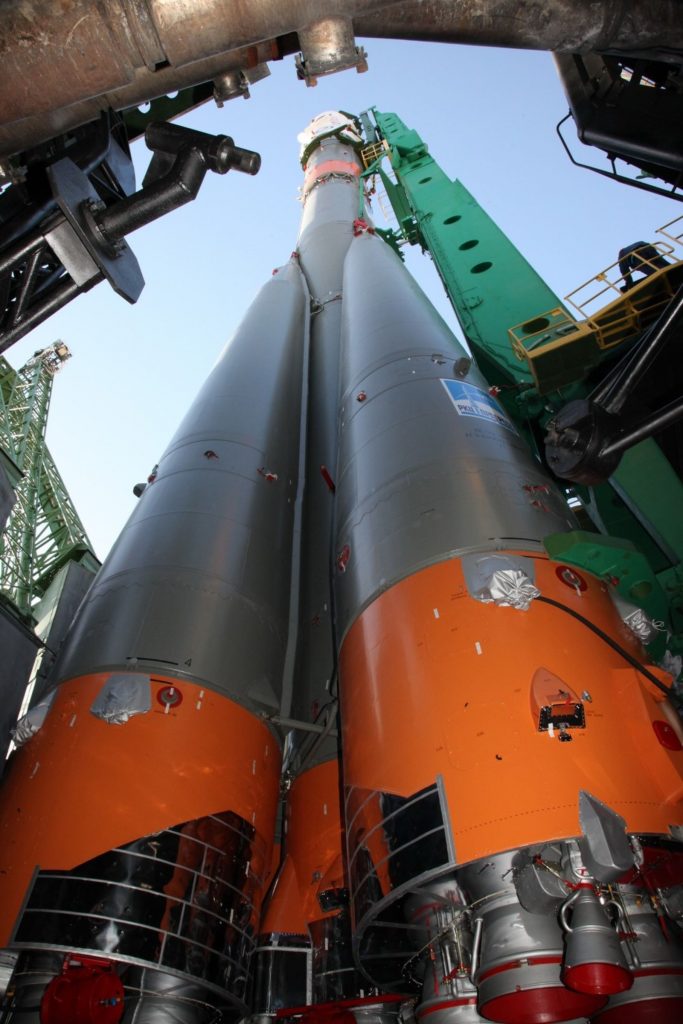
Soyuz FG will move through a fast-paced final countdown sequence over the last six minutes ahead of a 7:13:44 UTC liftoff, 1:13 p.m. local time at the Baikonur Cosmodrome. Climbing uphill with over 420 metric-ton force of thrust, Soyuz will quickly swing to the north-east, firing its four boosters for one minute and 58 seconds before they will drop away from the still-firing core stage. Soyuz will complete hot staging four minutes and 47 seconds into the flight and all eyes will be on the Block I upper stage that will fire just short of four minutes to push the 7,200-Kilogram spacecraft into a 200-Kilometer orbit.
Separating from the booster eight minutes and 48 seconds after launch, Soyuz will head into an express rendezvous with the Space Station, completing a pair of orbit-raising maneuvers during its first lap around the planet ahead of a fine-tuning maneuver on Orbit #3 to put the craft in the proper position for the start of the Automated Rendezvous that features a series of impulse maneuvers to deliver Soyuz to ISS in its 400-Kilometer orbit. Docking to the Poisk module is planned at 13:23 UTC to be followed by the usual leak checks and the opening of the hatch around 15:05 UTC.
Yurchikhin and Fischer are joining ISS for Expedition 51/52, a busy summer of science activities, CubeSat deployments and spacewalks at the orbiting outpost. They are booked to stay until September 3 when they will return to Earth with a parachute-assisted landing.

